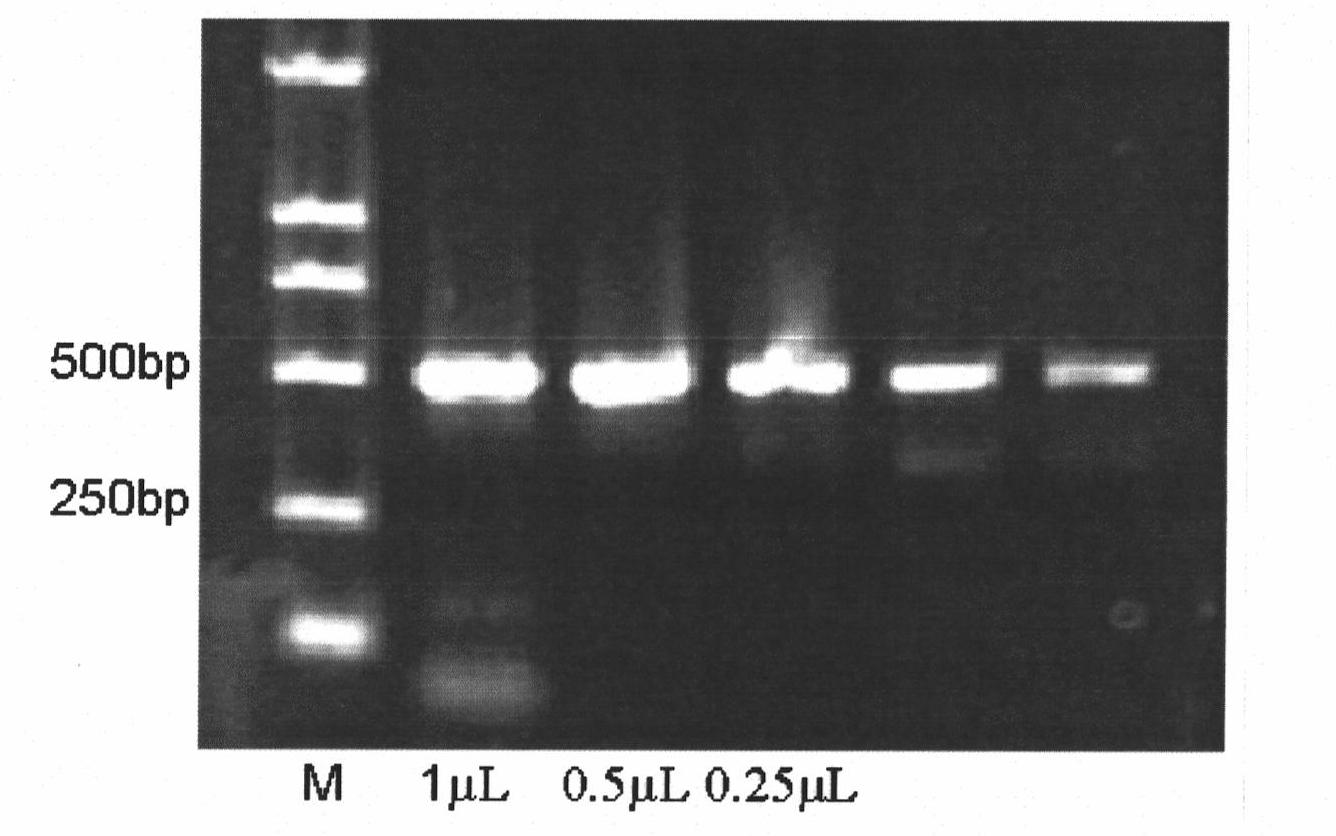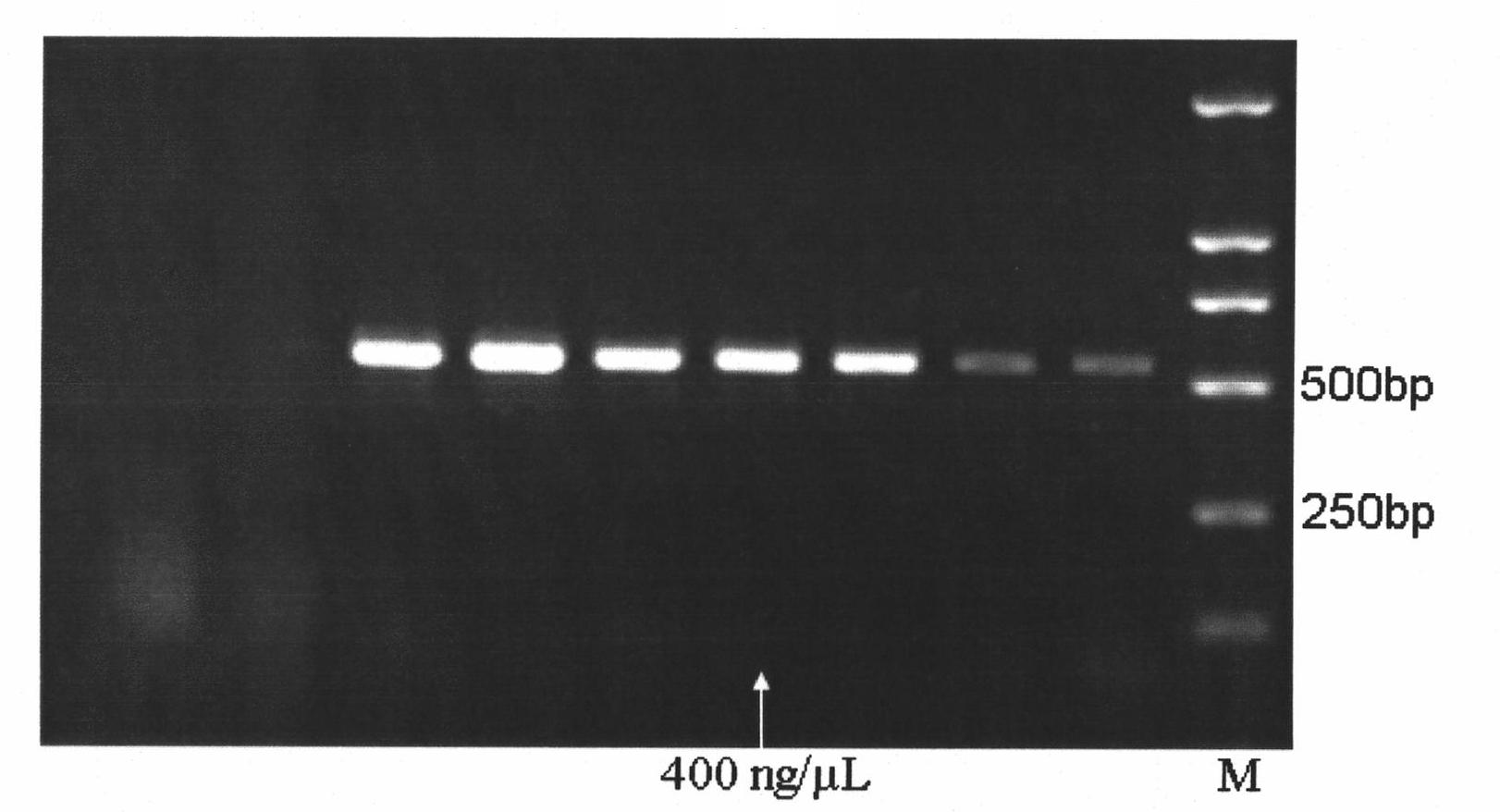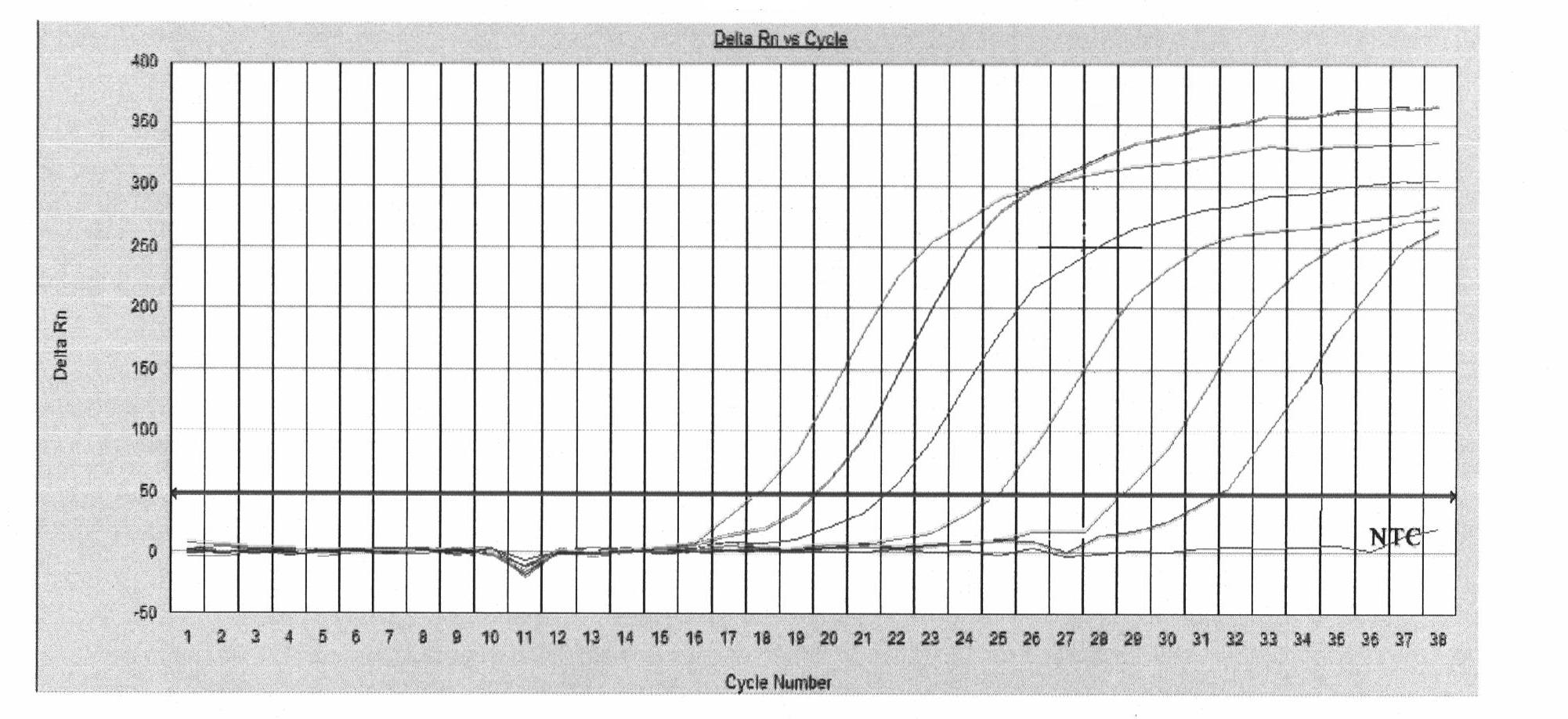Quantitative detection technique for fusarium graminearum infestation quantity in wheat grains
A technology for a quantitative detection method of Fusarium graminearum is applied in the technical field of quantitative detection of the infection amount of Fusarium graminearum in wheat grains, and can solve problems such as unstable correlation and damage to human health.
- Summary
- Abstract
- Description
- Claims
- Application Information
AI Technical Summary
Problems solved by technology
Method used
Image
Examples
Embodiment 1
[0056] Example 1. Screening of specific primers suitable for real-time quantitative PCR (Real-time quantitative PCR).
[0057] Since SYBR Green I is a fluorescent dye that binds to DNA double strands, it cannot select a specific DNA template, so this quantitative method requires primers not to form secondary structures and mismatches. Based on the purpose of detecting Fusarium graminearum producing DON toxin in the grain, the present invention designed 3 pairs of specific primers for the synthesis key gene Tri5 (encoding trichothecene synthase) of Fgraminearum DON toxin, and screened out 1 pair of excellent primers Tr5F and Tr5R.
[0058] Upstream primers: Tr5F(5'-AGCGACTACAGGCTTCCCTC-3')
[0059] Tox-sense-2 (5'-CCTTCAAGCCGGACGAGAGC-3')
[0060] Tox-sense-3 (5'-CCCAGGAAACCCTACACTCGTCT-3')
[0061] Downstream primers: Tr5R (5'-AAACCATCCAGTTTCTCCATCTG-3')
[0062] Tox-antisense-2 (5'-CATCTGAGCAACGGCTGACG-3')
[0063] Tox-antisens...
Embodiment 2
[0086] Example 2. SYBR Green I fluorescent dye quantitative PCR system optimization
[0087] In order to ensure the stability and reliability of the detection, Platinum TM SYBR Green qPCR SuperMix-UDG kit (Invitrogen, Carlsbad, CA). Enzyme, Mg in the kit 2+ , dNTP, etc. have been optimized, only need to add your own primers and templates, therefore, the experiment is only optimized for annealing temperature, primer concentration and sample DNA template concentration.
[0088] 2.1 Annealing temperature The Tm value of the annealing temperature is an important guarantee for the specificity of the reaction. If the annealing temperature is too low, non-specific amplification will occur. Therefore, choosing a higher annealing temperature can greatly reduce the non-specific binding between the primer and the template and improve the PCR efficiency. The specificity of the reaction, but too high annealing temperature will reduce the amplification efficiency, so it needs to be optim...
Embodiment 3
[0092] The sensitivity of embodiment 3SYBR Green I fluorescent dye quantitative PCR
[0093] Dilute the standard gradient of Fusarium graminearum genomic DNA into 8 gradients: 1 × 10 2 ng / μL, 1×10 1 ng / μL, 1ng / μL, 1×10 -1 ng / μL, 1×10 -2 ng / μL, 1×10 -3 ng / μL, 1×10 -4 ng / μL, 1×10 -5 ng / μL, quantitatively amplified with primers Tr5F and Tr5R; the obtained amplification pattern ( Figure 4 ), when the template concentration is less than 0.001ng / μL, the fluorescence value of the amplification curve is lower than the threshold value; and the product is detected by 1.5% agarose gel electrophoresis, and when the template concentration is less than 0.001ng / μL, there is no electrophoresis band ( Figure 5 ). It can be seen that the lowest sample concentration that can be detected by SYBR Green I fluorescent dye quantitative PCR is 0.001 ng / μL, and the sensitivity is at least 10 to 100 times that of ordinary PCR detection methods.
PUM
| Property | Measurement | Unit |
|---|---|---|
| Melting temperature | aaaaa | aaaaa |
Abstract
Description
Claims
Application Information
 Login to View More
Login to View More - R&D
- Intellectual Property
- Life Sciences
- Materials
- Tech Scout
- Unparalleled Data Quality
- Higher Quality Content
- 60% Fewer Hallucinations
Browse by: Latest US Patents, China's latest patents, Technical Efficacy Thesaurus, Application Domain, Technology Topic, Popular Technical Reports.
© 2025 PatSnap. All rights reserved.Legal|Privacy policy|Modern Slavery Act Transparency Statement|Sitemap|About US| Contact US: help@patsnap.com



